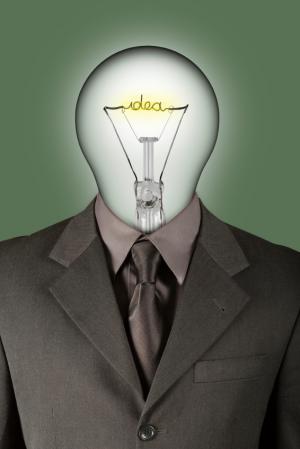
글 : 인지심리 매니아
* 이 글은 필자의 개인적 견해를 바탕으로 작성되었습니다.
필자는 인공지능, 특히 유전 알고리즘을 코딩해서 실행해 볼 때마다 놀랍다는 생각을 한다. 얼마 전, 변수가 여러 개인 방정식의 해를 구할 일이 생겼다. PHP로 인공지능을 만들어서 실행시켰더니, 순식간에 답을 도출해냈다. 인간이라면 하루종일 계산해야 할 일을 컴퓨터가 뚝딱 해결한 것이다.
유전 알고리즘(Genetic Algorithm)이란 다윈의 진화론을 바탕으로 한 통계적 탐색 알고리즘 집합이다. 예를 들어 15x-x^2이라는 함수의 최대값을 찾는 문제를 푼다고 생각해보자. 유전 알고리즘은 이 함수(적합도 함수)를 풀기 위해 가능한 모든 답(해집단)들을 임의로 생성한다. 그 다음 해집단 사이에서 교배가 일어난다(정수를 이진수로 바꾼 다음, 둘둘씩 짝지어서 이진 수를 교환한다. 마치 실제 교배에서 자식이 양 부모의 유전자를 타고 나는 것과 유사한 원리다). 이 때 적합도가 가장 높은 염색체는 교배에서 우위를 점하게 되고, 결국 많은 자손을 낳게 된다. 이런 과정이 반복되면, 적합도가 가장 높은 염색체의 자손들만이 살아남게 되고 결과적으로 적합도 함수의 정답에 가까워진다.

그런데, 곰곰이 생각해보면 유전 알고리즘이 인간의 창의성과 무척 유사하다는 점을 깨달을 수 있다. 심리학자들은 창의성이 ‘발산적 사고'와 ‘수렴적 사고'로 구성되어 있다고 정의한다. 즉, 수 많은 아이디어를 생산하는 한편 문제 해결에 유용한 아이디어를 생각하고 고를 수 있는 능력이 함께 요구되는 것이다. 유전 알고리즘에서 해집단을 임의로 생성하거나 교배하는 과정은 발산적 사고와 유사하다. 하지만 해집단은 적합도 함수에 적합해야 하는 점에서 수렴적 사고의 측면도 지니고 있다. 어쩌면, 창의성을 진화적 관점에서 설명한 도널드 캠벨(Donald Campbell)은 이 사실을 50년 전에 이미 알고 있었던 것 같다.
수십 년 전, 앨런 튜링은 인간의 사고를 컴퓨터로 비유하면서 인지 과학 혁명을 일으켰다. 필자는 앨런 튜링처럼 위대한 학자가 아니지만, 유전 알고리즘의 비유가 인간의 창의성을 이해하는 데 큰 도움이 될지 모른다고 생각한다(사실 창의성을 컴퓨터로 시뮬레이션한 시도는 이전에도 있었지만). 창의성에 대한 적절한 모델을 인공지능에서 차용한다면, 창의성을 둘러싼 수 많은 논쟁을 해결할 수 있을 것이다.
예를 들어보자. 필자는 유전 알고리즘의 성능 그래프(performance graph)를 관찰하던 중, 적합도 곡선이 이따금 인간의 ‘통찰'과 유사한 패턴을 보인다는 사실에 주목했다.

위 그래프는 최대 적합도를 가진 염색체와 해집단 전체의 평균 적합도를 나타낸다. 두 그림에서 최대 적합도의 곡선은 점진적이라기 보다는 특정 시점에서 급격히 상승하는 ‘계단식’ 곡선에 가깝다. 이 패턴은 통찰을 필요로 하는 문제에서 사람들이 처음에는 정답을 생각하지 못하다가(impasse), 갑자기 통찰을 얻는 패턴(‘a-ha’ 또는 ‘유레카’)과 매우 유사하다. 만약 유전 알고리즘이 창의성을 표상하는 적절한 모델이라면, 창의성에서 논란이 되었던 두 문제에 해답을 줄지도 모른다.
우선, 유전 알고리즘이 작동하는 방식을 살펴보면 문제가 해결되지 않다가 통찰이 느닷없이 찾아오는 것이 당연하다는 생각이 든다. 위 그래프에서 한동안 적합도에 개선이 없는 이유는 ‘그 밥에 그 나물을' 조합하기 때문이다. 각 염색체의 적합도가 서로 비슷할 경우 교배를 해도 적합도에 큰 개선이 나타나지 않기 때문에 정체 현상이 찾아온다. 즉, impasse가 발생한 것이다. 문제를 극적으로 해결하는 요인은 바로 ‘변이(Mutation)’다. 별반 다를 바 없는 염색체들 사이에서 어느 날 갑자기 등장한 돌연변이는 적합도를 순식간에 향상시킨다. 변이율이 큰 두번째 그림에서 적합도가 더 커지는 사실을 봐도 이를 알 수 있다.
이 원리를 창의성에 적용해 보자. 어떤 문제에 대해 우리가 6개의 아이디어를 가지고 있다고 생각해보자. 만약 이 6개의 아이디어가 문제 해결의 적합성 측면에서 비슷비슷하다면, 아이디어들을 서로 조합해도 문제가 해결되지 않을 것이다(물론, 처음부터 해결책이 머리 속에 있다면 문제는 단번에 해결되거나 몇 번의 교배만으로 해결될 것이다). 하지만, 다소 기발한 생각이나 외부로부터 얻은 새 아이디어는 문제를 극적으로 해결한다.
결론적으로, 유전 알고리즘은 impasse가 발생하는 원인에 대해 통찰을 제공한다. 문제가 한동안 해결되지 않는 이유는 적합하지 않은 생각들 속에서, 또는 자신의 한정된 지식 사이에서 아이디어를 내려 하기 때문일 것이다. 생각의 재조합(교배)으로도 해결되지 않는 문제는 극적인 생각의 변화(즉 변이)가 동반되지 않는 한 해결되지 않을 것이다. 그러나 극적인 생각의 변화가 뇌에서의 이상 현상 때문인지, 또는 외부로부터 유입된 새로운 정보 때문인지는 의문이다(자르페이트의 연구 결과는 이 주장을 뒷받침 하고 있다).
또, 유전 알고리즘의 성능 그래프 결과는 통찰이 점진적으로 획득된다는 견해(Durso et al, 1994, Novick and Sherman, 2003a)와 불일치하는 것처럼 보인다. 일반인의 상식처럼, 문제는 어느 날 갑자기 통찰을 얻으면서 해결되는 듯 하다. 최근, 통찰이 갑자기 찾아온다는 사실을 입증한 인지신경과학 연구(2011/08/03 - [인지심리기사/창의] - 통찰(insight)의 신경학적 근거)들은 이 추측에 무게를 실어준다.
'인지심리기사 > 인지심리 칼럼' 카테고리의 다른 글
| 효과적인 단어 암기법 2 (2) | 2012.07.14 |
|---|---|
| 현실에선 '닥터 진', '유령'과 같은 사랑이 일어나지 않는다. (0) | 2012.07.06 |
| [TED] 조나단 하이트 : 종교, 진화, 자기 초월(self-transcendence)의 행복 (1) | 2012.04.20 |
| 인지심리학적 원리에 기반한 단어 암기법 만들기 (1) | 2012.04.15 |
| 이정모 교수님 - 내 생각만이 타당하다는 착각 속에서 사는 우리 (2) | 2012.02.21 |

